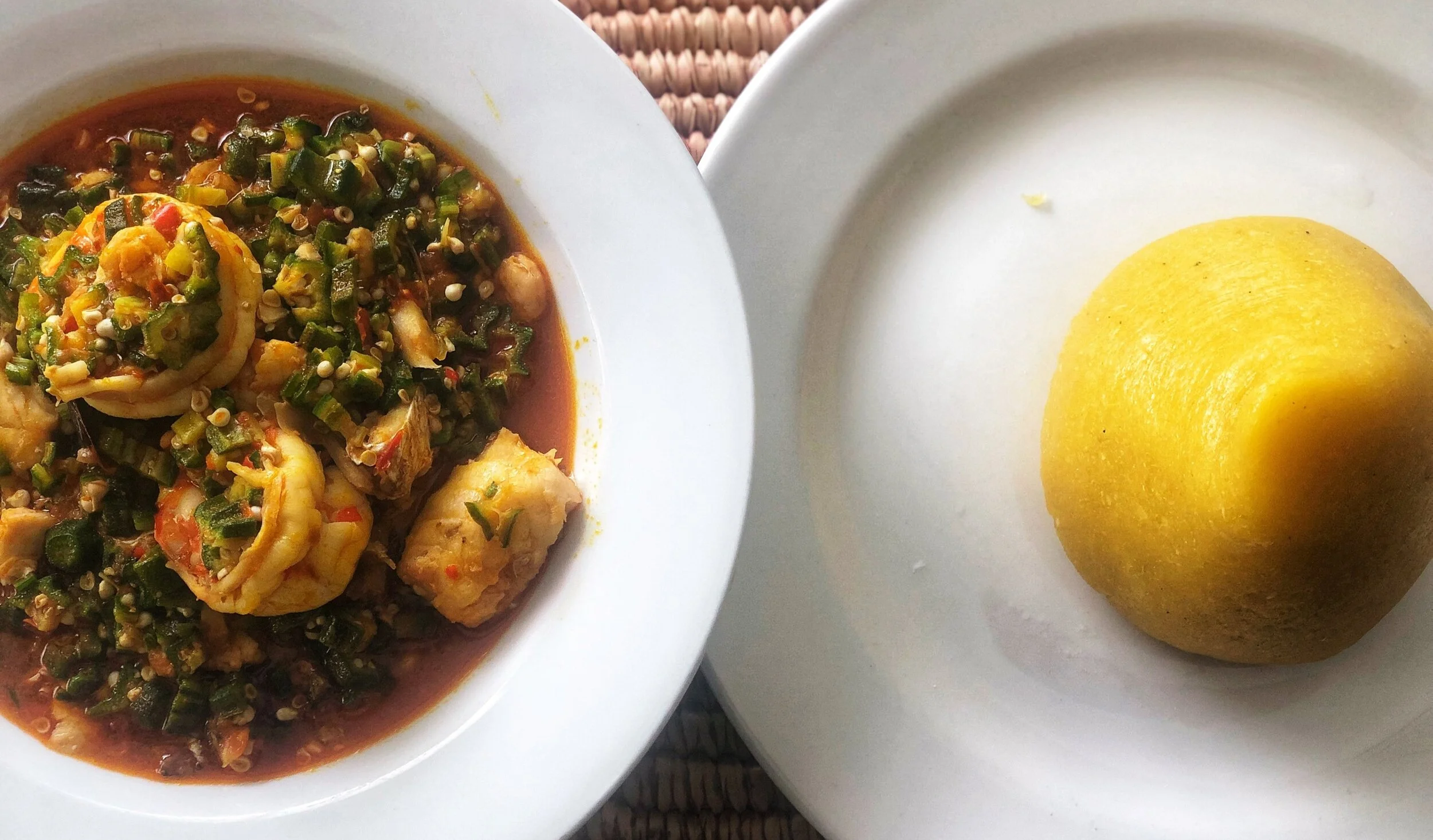Yellow Chilli: Eba As A Contender Against Amala
For some time now we’ve witnessed so many agendas be pushed about how amala is our next best export after Burna Boy and the Nigerian engineers running to Canada. We’ve seen a top lad be dragged on Tinubu’s internet when he called for the ban of amala, and even heard people lie about amala tasting differently from how it did when we were children - and people need to chill with these. Can’t allow for these baseless claims without even assessing all contenders.
Based on popular demand, the Yellow Chilli Seafood Okro and Eba were my first pick to challenge amala.
Disclaimer: For the purpose of this piece, I may interchangeably use ‘abula’ and ‘amala’. Why? Amala is merely the swallow and abula the soup, but either are used colloquially to represent a combination of swallow and soup.
For our foreign readers and ‘Other-Lagos’ people, these weird sounding dishes are;
Abula: A colourful mixture of three soups native to South-Western Nigeria, gbegiri (bean soup), ewedu (draw vegetable soup) and obe ata (pepper stew), eaten with amala and an assortment of meats
Amala: A local indigenous Nigerian food sitting on a false throne. It is made of yam flour or unripe plantain flour, whipped or stirred into a fluffy dough.
Eba: A coarse dough made from fried or roasted grated cassava (manioc) flour, commonly called “garri”.
Okro: Also called “Ladies’ Fingers”, this is a tall annual plant of the mallow family, grown for its slender, ribbed, sticky, green pods that are used to make soup.
The Seafood Okro had a lovely texture with slightly crunchy okro, meaning it was fresh and hadn’t been reheated, and was rich in proteins with the huge chunks of fish, prawns and shrimp. It almost felt like there was/were more proteins than okro in the soup - a nice problem to have, I know. Pound for pound, seafood okro hits harder that abula soup in terms of general quality and proteins. Imagine having to mix three basic soups to compete with just one. Imagine comparing common assorted meats to elegant seafood. Crazy.
Shaped like the copious bosom of our Nigerian women, the eba, made of yellow garri; was neither too hard nor too soft; and the texture and coarseness complemented the slimey nature of the okro soup - something amala cannot do. In terms of range, eba is also (arguably) greater than amala. The coarse nature of eba lets it go well with ‘draw soups’ like okro and ogbono soup and its fluffy texture with thicker soups like efo riro and ewedu.
Clearly, seafood okro and eba make a better couple than amala and abula, so let’s stop being sheep and give it the commendation it deserves. Another doper dish than amala is pounded yam and efo riro but that fight is for another day.
Anyway, while you are here, we also shared a Crumbed Prawns starter and Tobi tried the Isi Ewu (goat head soup) with fried yam.
Quite unsure of why I dared to order Crumbed Prawns at a Nigerian restaurant but they didn’t turn out half bad. The prawns were fried to good texture but the batter seemed too thick and heavy.
TOBI: A nice sweet chilli sauce would also have gone better with the prawns than the unbearable chilli sauce and tartar sauce.
TOBI: A soup with boiled or roasted pieces of spiced goat head, mixed in a thick palm oil-based sauce, isi ewu really is food for the soul. Paired with the people’s favourite, fried yam, it makes for a great dish after a long day at work.
FOLARIN: Can’t imagine the frugality that made the pioneer of this dish consider cooking goat head.
TOBI: The meat was tender and cooked to perfection. The sauce, partly made with mashed goat brain, had a good balance of pepper and local Nigerian spices. Besides the salt which was a little too much for my taste, the spice levels were just right - neither bland nor overly hot to cause a runny nose. The mildly bitter taste of the utazi leaves garnish also added extra flavour to the dish.
Isi ewu is best eaten with bare hands, giving you a real local vibe and the freedom to navigate through the ears, eyes, tongue and other parts of goat head in the soup.
FOLARIN: Ew.
POSTSCRIPT
FOLARIN: Besides not being given the choice between Ijebu and yellow garri, we enjoyed the experience. It’s a nice place for expats to get a taste of local swallows.
VERDICT
DAMAGE
Crumbed Prawns - N3200
Seafood Okro - N4200
Isi Ewu - 4500
PARKING
There's parking but a few restaurants are around that area so expect some struggle if Yellow Chilli's space is full






